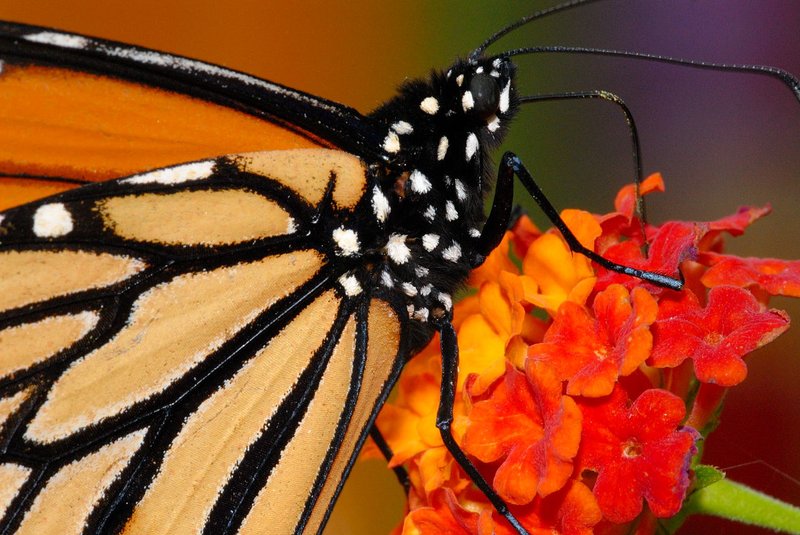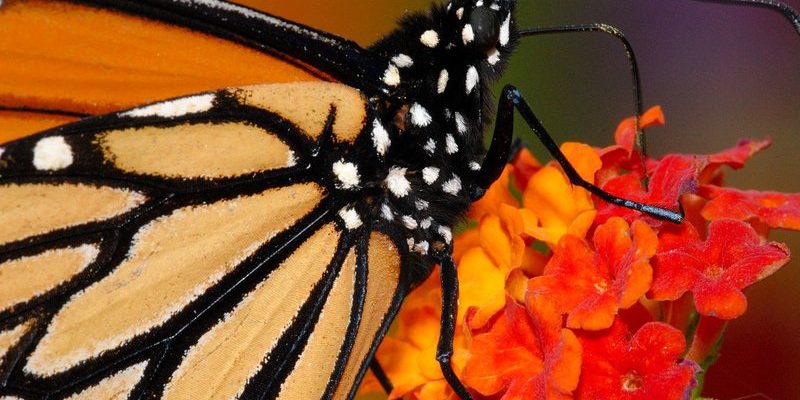
The history of the monarch butterfly is a fascinating journey filled with survival, adaptation, and incredible transformations. These butterflies have been around for millions of years, evolving alongside changing environments and facing new challenges. Let’s dive into their world, exploring how they became the beloved symbols of resilience that they are today.
Origins and Early History
Monarch butterflies belong to the family Nymphalidae, which includes many other types of butterflies. They’re believed to have originated in the tropics of Central America. The earliest records suggest that monarchs have been fluttering around for at least 15 million years! Talk about a long time in the spotlight!
These butterflies have a strong connection to milkweed, a plant that serves as their main food source when they’re in the caterpillar stage. Monarch caterpillars are a bit picky; they only munch on milkweed, which makes them toxic to predators. This unique relationship helped them thrive and adapt over countless generations. It’s like having a secret weapon in the wild!
Interestingly, it wasn’t until the early 19th century that researchers first identified and classified the monarch butterfly. Back then, scientists were just starting to explore the rich diversity of insect life on Earth.
Migration: The Monarch’s Epic Journey
One of the most remarkable aspects of the monarch butterfly is its migration. Each year, millions of monarchs travel thousands of miles from North America to central Mexico. This journey can stretch up to 3,000 miles! Imagine flying cross-country without stopping for gas!
The migration usually begins in late summer or early fall. As temperatures drop, monarchs instinctively know it’s time to head south. They follow a route that’s been passed down through generations—a sort of butterfly GPS that helps them reach their wintering grounds. Isn’t it fascinating how they can navigate so far?
Once they arrive in Mexico, they gather in huge colonies, often covering entire trees with their vibrant wings. They hang out there for the winter, where the temperatures are milder. It’s like a butterfly convention! When spring arrives, they’ll begin their journey back north to lay eggs and start the cycle all over again.
Life Cycle: From Egg to Butterfly
The life cycle of a monarch butterfly is a spectacular transformation. It consists of four stages: egg, larva (caterpillar), pupa (chrysalis), and adult butterfly. Let’s break it down.
– Egg Stage: Female monarchs lay tiny eggs, usually on milkweed plants. These eggs are incredibly small and can be easy to miss.
– Larva Stage: After about 3-10 days, the eggs hatch into caterpillars. Monarch caterpillars are known for their vibrant black, white, and yellow stripes. During this stage, they eat milkweed voraciously, growing rapidly and shedding their skin several times. If you remember your childhood, it’s like growing out of your clothes!
– Pupa Stage: Once they’ve reached a certain size, the caterpillars attach themselves to a safe spot and form a chrysalis. Inside this protective shell, they undergo a miraculous transformation.
– Adult Stage: After about 10 days, the adult butterfly emerges, initially from a crumpled state to a fully formed monarch. This stage marks their entry into the world, ready to start the cycle all over again.
Conservation and Current Challenges
While monarch butterflies are stunning and resilient, they face significant challenges today. Habitat loss, climate change, and pesticide use are pushing these beautiful insects to the brink. It’s like playing a tough video game where the levels just keep getting harder!
Conservation efforts are underway to protect their habitats and encourage more people to plant milkweed in their gardens. This is crucial because milkweed is essential for the monarch’s life cycle. Simple actions, like creating butterfly-friendly spaces, can make a big difference.
Organizations and researchers are also working to track their migration patterns more closely. This helps us understand how changing climates affect their routes and survival. The more we know, the better we can help!
Monarchs in Culture and Symbolism
Monarch butterflies aren’t just biological wonders; they’re also rich in symbolism across various cultures. Many people see them as a representation of transformation and hope, as they undergo such a significant change in their life cycle.
In some cultures, these butterflies symbolize the souls of loved ones returning to visit. Imagine seeing a butterfly and feeling a comforting presence! Their migration journey also serves as a metaphor for resilience and perseverance, reminding us that we can overcome challenges, no matter how far they seem.
Art and literature often draw inspiration from the beauty of monarchs. From children’s books to stunning photography, these butterflies capture imaginations and hearts. They remind us of the delicate balance of nature and our role in preserving it.
How You Can Help Monarch Butterflies
Want to do your part in supporting monarchs? Here are some simple actions you can take:
- Plant Milkweed: Create a habitat in your garden by planting milkweed and nectar-rich flowers.
- Avoid Pesticides: Try to use natural pest control methods to keep your garden butterfly-friendly.
- Educate Others: Share what you’ve learned about monarchs with friends and family.
- Join Conservation Efforts: Get involved with local organizations focused on butterfly conservation.
- Raise Awareness: Post about monarchs on social media—every little bit helps!
Making a few small changes can create a ripple effect, helping these awe-inspiring butterflies thrive for generations to come.
The story of the monarch butterfly is one of resilience, transformation, and beauty. From their incredible migrations to their fascinating life cycles, these butterflies captivate us in so many ways. It’s up to us to ensure their survival and support their habitats.
As we continue to learn about and appreciate these stunning creatures, let’s also remember the lessons they teach us about change and adaptability. Whether you’re planting milkweed in your backyard or simply admiring their beauty in a garden, you’re part of a larger story that connects us all. So, the next time you catch sight of a monarch butterfly, take a moment to appreciate its journey and the history that brought it to you.

